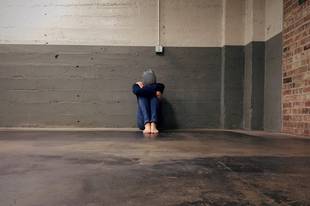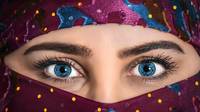
Ethnic Groups in the Philippines
Ethnic groups in the Philippines are classified according to certain physical, cultural, linguistic, religious and geographic criteria.
A. According to distinctive physical traits
- The Negritoes who are regarded as the aborigines of the Philippines
- The Indonesian – Malayan stock which is predominant among the Filipinos.
- The Chinese who make up the largest national group.
- The American and the Spanish, and a few other Europeans who came as colonizers.
B. According to cultural standpoints
- Cultural minorities or cultural communities
- Muslims
- Christian groups
C. According to linguistic groupings
PANAMIN reports that there are about 87 ethno linguistic groups in the Philippines-e.g., Tagalog, Ilokano, Waray, Hiligaynon, Kapampangan, Ilonggo, etc.
D. According to religion
| 1. Roman Catholics | 4. Protestants | 7. Jehovah’s witnesses |
| 2. Muslims | 5. Iglesia ni Kristo | 8. Other religious sects |
| 3. Aglipayans | 6. Buddhists |
E. Muslims of Southern Philippines
The Muslims make up the largest single non-Christian group. They have nine ethno-linguistic groups, namely:
| 1. Taosug | 4. Samal | 7. Badjao |
| 2. Maranao | 5. Yakan | 8. Molbog |
| 3. Maguindanao | 6. Sanggil | 9. Jama Mapun |
From the Spanish regime to the present, Muslim and Christian intergroup relationships have been characterized by animosity and suspicion. This has been expressed in the Muslims’ ongoing resentment of Christian settlers and attempts at secession to form an independent Mindanao (Grant and Fima, 1973). Muslim revolutionary groups, the Moro National Liberation Front (MNLF) and the Bangsai Moro Liberation Front (BMLF) want Mindanao, Sulu, and Palawan to secede from the Philippines. (Glang, 1969)
The government has tried to attend to the needs of these cultural communities. It has pursued a policy of national integration, rehabilitation, and economic development as part of all programs for national development. It has accelerated the economic, educational, and social programs for the area and aimed to restore the ancestral lands to the Muslim Filipinos. In 1976, an agreement was made between the Republic of the Philippines through then President Ferdinand Marcos and the MNLF for the autonomy of 13 provinces in Southern Philippines and the establishment of a government to administer the area. The pact is popularly referred to as the Tripoli Agreement. The first administrator of this provincial government is Nur Misuari, Moro National Liberation Front Chairman. The first formal peace negotiations started in October 26, 1993 between Nur Misuari and Ambassador Manuel Yan, chief government negotiator.
The Tripoli Agreement apparently did not succeed as hostilities between the two parties would still continue to date, peace talks are ongoing to address the details of the Muslim insurgency problem; the kind of autonomy the Muslims expect in terms of boundary, taxation powers, greater freedom in the exercise of Shariah laws, and, more generally, their quest for Mindanao as their home. (Panopio 1994)
The Cultural Communities and the Christian Filipinos
The non-Christian Filipinos now known as cultural communities make up 10% of the total national population. They have maintained their culture in their clothes, art, religion, ethnic dialect, customs, traditions and other superficial differences. There are 77 major ethno-linguistic groups in the Philippines. (Philippine Cultures, 20)
A. Northern Luzon
| 1. Isneg | 11. Ivatan / Itbayat | 21. Malaweg |
| 2. Kalinga | 12. Ilocano | 22. Yogad |
| 3. Ifugao | 13. Apayao | 23. Pangasinan |
| 4. Bontok | 14. Balangao | 24. Palanan |
| 5. Kankanai | 15. Bago | 25. Kapampangan |
| 6. Ibaloi | 16. Kalanguya | 26. Tagalog |
| 7. Gaddang | 17. Iwak | 27. Bicol |
| 8. Tinggian | 18. Isinay | 28. Negrito |
| 9. Ilongot | 19. Ibanag | 29. Sambal |
| 10. Ibalahan | 20. Itawit |
B. Smaller Groups in Luzon
| 1. Aetas of Zambales | 3. Mangyans of Mindoro |
| 2. Dumagats of Quezon Province | 4. Hanunoo |
C. Visayas
| 1. Bataks | 7. Aklanon | 13. Sulod |
| 2. Keney | 8. Rombloanan | 14. Bukidnon |
| 3. Negritoes | 9. Bantoanan | 15. Boholano |
| 4. Alangans | 10. Hiligaynon | 16. Cebuano |
| 5. Masbateno | 11. Kiniray-a | 17. Waray |
| 6. Abaknon | 12. Hamtikanon |
D. Mindanao
| 1. Tirurays | 8. Mansakas | 15. Kamiguin |
| 2. Tagabilis | 9. Maranao | 16. Mamanwa |
| 3. Bilaans | 10. Sangil / Sangir | 17. Butuanon |
| 4. Mandayas | 11. Ilanun | 18. Kamayo |
| 5. Manobos | 12. Magindanao | 19. Bagobo |
| 6. Tasadays | 13. Tiboli | 20. Kalagan |
| 7. Magtisalugs | 14. Subanon | 21. Kalibugan |
E. In Sulu / Tawi – Tawi
| 1. Yakan | 3. Sama Dilaut | 5. Jama Mapun |
| 2. Sama | 4. Tausug |
F. In Palawan
| 1. Tagbanua | 6. Batak |
| 2. Agutayanen | 7. Tau’t Baten (in caves of Palawan) |
| 3. Kuyonen | |
| 4. Molbog | |
| 5. Palawan |
Measures and Efforts to Eliminate or Reduce Prejudice and Discrimination
Special measures are needed to eliminate or reduce prejudice and discrimination of the minority groups. These include:
- Contact and Acquaintance. It has been pointed out that people develop prejudice because they are ignorant of an unfamiliar with the ways of living of ethnic groups. It is suggested that the majority group should be given the information about and proper acquaintance with the minority in order for the former to develop sympathy, tolerance and friendly feelings with these people.
- Conduct sociological inquiry into the roots of the prejudice against ethnic groups, expose the fallacy of these unsupported beliefs and stereotypes, and replace them with scientific truths about the prejudiced groups.
- State-funded public educational institutions from the elementary to the tertiary level. This will eliminate prejudice against graduates of public schools systems in the present public and private schools set-up. This will also eliminate the commercialization of education in private schools, which make it difficult for children belonging to poor families to avail of quality education.
- Affirmative Action Programs. This is a process in which special consideration and preferential treatment are given to members of minority groups to offset the effects of past discrimination. It means the setting of priorities in the hiring of minorities and establishing timetables for reaching minority employment “target” goals. It is aimed at eliminating discrimination based on race, religion, ethnic origin, or sex.
- Increase the number of low and moderate-income housing units for the poor.
- Removal of structural barriers to decent jobs created by changes in our system of production.

















